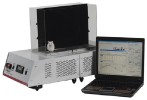Authors
Draxler P, Honsek SD, Forsthuber L, Hadschieff V, Sandkühler J
Lab
Department of Neurophysiology, Center for Brain Research, Medical University of Vienna, Vienna, Austria.
Journal
J Neurosci.
Abstract
Sensory nerve fibers differ not only with respect to their sensory modalities and conduction velocities, but also in their relative roles for pain hypersensitivity. It is presently largely unknown which types of sensory afferents contribute to various forms of neuropathic and inflammatory pain hypersensitivity. Vesicular glutamate transporter 3-positive (VGluT3(+)) primary afferents, for example, have been implicated in mechanical hypersensitivity after inflammation, but their role in neuropathic pain remains under debate. Here, we investigated a possible etiology-dependent contribution of VGluT3(+) fibers to mechanical and cold hypersensitivity in different models of inflammatory and neuropathic pain. In addition to VGluT3(-/-) mice, we used VGluT3-channelrhodopsin 2 mice to selectively stimulate VGluT3(+) sensory afferents by blue light, and to assess light-evoked behavior in freely moving mice. We show that VGluT3(-/-) mice develop reduced mechanical hypersensitivity upon carrageenan injection. Both mechanical and cold hypersensitivity were reduced in VGluT3(-/-) mice in neuropathic pain evoked by the chemotherapeutic oxaliplatin, but not in the chronic constriction injury (CCI) model of the sciatic nerve. Further, we provide direct evidence that, despite not mediating painful stimuli in naive mice, activation of VGluT3(+) sensory fibers by light elicits pain behavior in the oxaliplatin but not the CCI model. Immunohistochemical and electrophysiological data support a role of transient receptor potential melastatin 8-mediated facilitation of synaptic strength at the level of the dorsal horn as an underlying mechanism. Together, we demonstrate that VGluT3(+) fibers contribute in an etiology-dependent manner to the development of mechano-cold hypersensitivity.
BIOSEB Instruments Used:
Thermal Place Preference, 2 Temperatures Choice Nociception Test (BIO-T2CT)

 Pain - Thermal Allodynia / Hyperalgesia
Pain - Thermal Allodynia / Hyperalgesia Pain - Spontaneous Pain - Postural Deficit
Pain - Spontaneous Pain - Postural Deficit Pain - Mechanical Allodynia / Hyperalgesia
Pain - Mechanical Allodynia / Hyperalgesia Learning/Memory - Attention - Addiction
Learning/Memory - Attention - Addiction Physiology & Respiratory Research
Physiology & Respiratory Research
 Pain
Pain Metabolism
Metabolism Motor control
Motor control Neurodegeneration
Neurodegeneration Cross-disciplinary subjects
Cross-disciplinary subjects Muscular system
Muscular system General activity
General activity Mood Disorders
Mood Disorders Other disorders
Other disorders Joints
Joints Central Nervous System (CNS)
Central Nervous System (CNS) Sensory system
Sensory system
